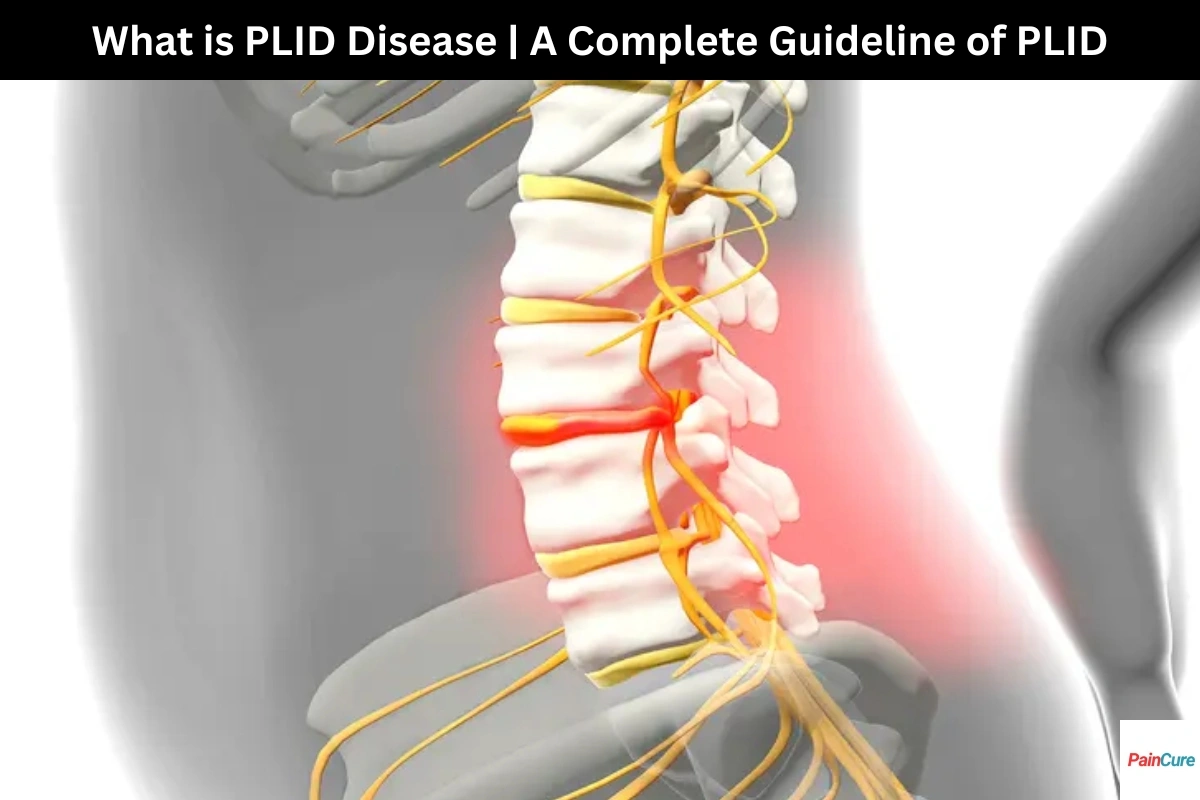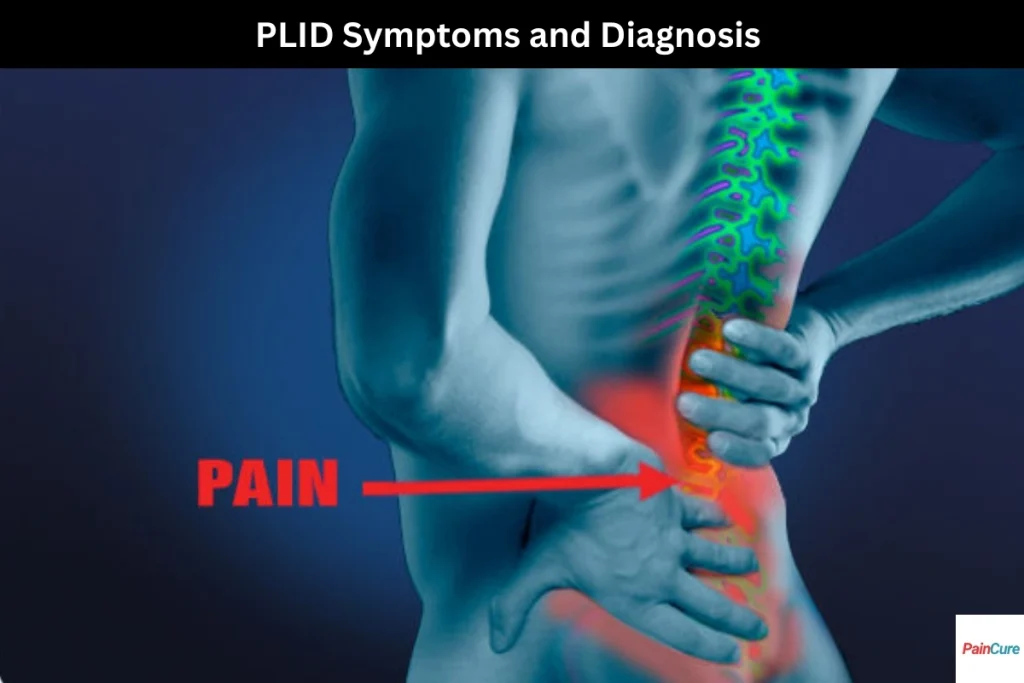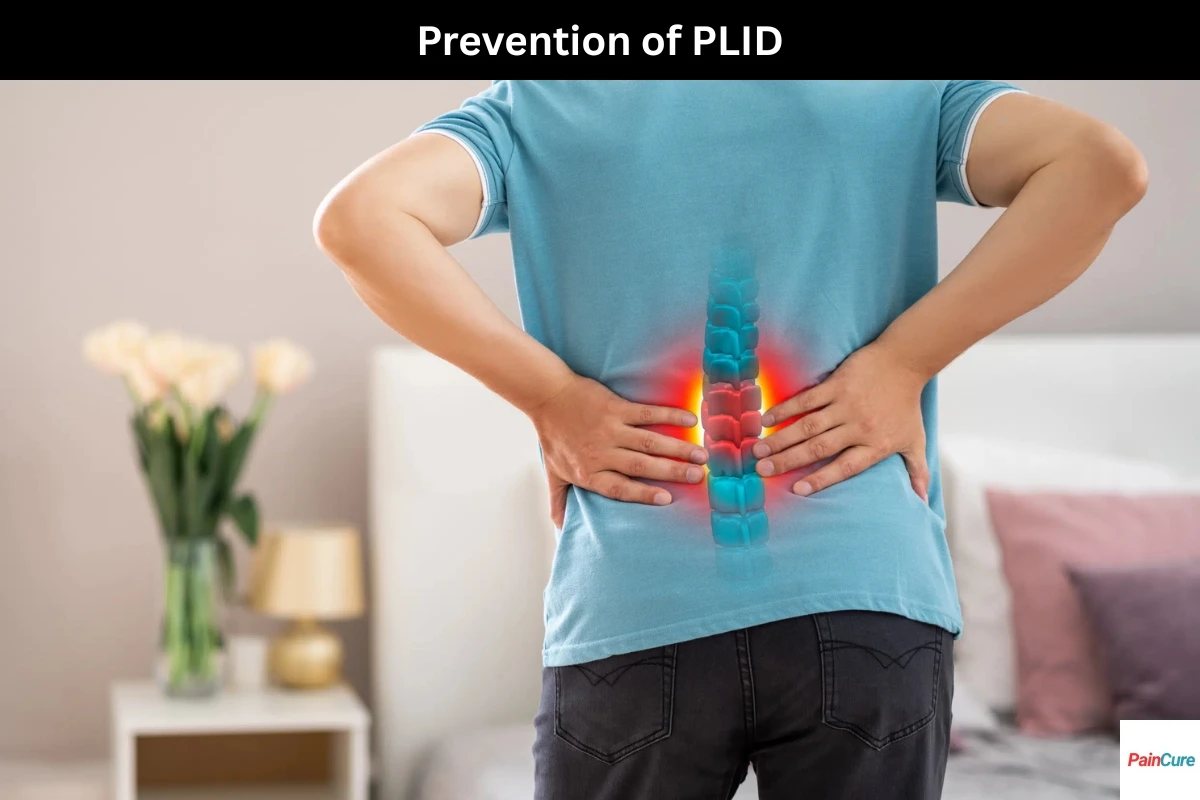
What is PLID Disease | A Complete Guideline of PLID
Introduction to PLID Disease
What is PLID Disease? Prolapsed Lumbar Intervertebral Disc (PLID), commonly referred to as a herniated or slipped disc, is a widespread spinal condition that significantly affects an individual’s quality of life by causing discomfort and limiting mobility. This condition happens when the soft, jelly-like center of a spinal disc, called the nucleus pulposus, pushes through a tear or weak spot in its tough outer layer, known as the annulus fibrosus.This protrusion can press against nearby nerves, leading to a range of debilitating symptoms, including lower back pain, sciatica (radiating pain down the legs), and neurological issues such as numbness, tingling, or muscle weakness. Understanding what is PLID disease is critical for patients and caregivers to recognize its signs early and seek timely medical intervention. Factors like age-related disc degeneration, trauma, repetitive strain, or poor lifestyle choices can contribute to its onset, making awareness of what is PLID disease essential for prevention. By gaining detailed insights into its causes, symptoms, diagnostic methods (such as MRI or CT scans), and treatment options—ranging from conservative approaches like physical therapy and medications to surgical interventions like microdiscectomy—individuals can take proactive steps to manage and mitigate the impact of PLID. This comprehensive knowledge empowers patients and caregivers to make informed decisions, adopt spine-healthy habits, and pursue optimal care to improve long-term outcomes and enhance overall well-being.
Anatomy of the Lumbar Spine
The lumbar spine, in the lower back, has five vertebrae (L1 to L5) that hold up the upper body and protect the spinal cord. Intervertebral discs act as cushions between these vertebrae, absorbing shock and enabling flexibility. Each disc consists of:
- Nucleus Pulposus: The soft, gel-like center of a spinal disc that helps it stay flexible and absorb shock.
- Annulus Fibrosus: A tough, fibrous outer ring that encases the nucleus pulposus, ensuring structural integrity.
The symptoms of PLID disease differ based on how severe the disc prolapse is and where it occurs. Common signs include:
- Lower Back Pain: Ranging from mild to severe, often persistent or intermittent, worsened by sitting or bending.
- Sciatica: A condition causing sharp pain, numbness, or tingling in the legs, resulting from pressure on the nerve roots.
- Muscle Weakness: Difficulty moving legs or feet, impacting daily activities like walking.
- Bladder or Bowel Dysfunction: Rare but serious, requiring immediate medical attention, as it may indicate cauda equina syndrome.
- Abnormal Gait or Posture: Resulting from pain or muscle weakness, affecting mobility.
Early recognition of these symptoms is critical for timely intervention and preventing further complications from PLID disease.
Other Causes of PLID Include
Prolapsed Lumbar Intervertebral Disc (PLID) can be triggered by various risk factors that contribute to its development. A back injury or trauma, like a fall or vehicle collision, can harm the intervertebral disc, causing it to herniate. Repetitive lifting or twisting motions, often associated with certain occupations or activities, may weaken the annulus fibrosus over time, increasing the likelihood of PLID. Being overweight or obese adds extra stress to the lower spine, speeding up the wear and tear of spinal discs.Genetics or family traits can influence the strength and durability of spinal discs, making some people more likely to develop PLID. Poor posture or misaligned spine can put extra stress on the lower back, increasing the chance of disc injury and PLID. Not all individuals with these risk factors will develop a prolapsed lumbar intervertebral disc (PLID), and some without any risk factors may still experience the condition. Knowing these risk factors can help people take steps to lower their chances of getting PLID later on.
PLID Symptoms and Diagnosis
The symptoms of a prolapsed lumbar intervertebral disc (PLID) can differ based on the extent and position of the disc herniation, but commonly include:
- Lower back pain
- Pain that travels down the legs, commonly called sciatica
- Numbness or tingling in the legs or feet
- Muscle weakness or difficulty moving the legs
- In severe cases, trouble controlling bladder or bowel function.

Diagnosis of PLID
Diagnosing PLID usually includes a physical exam, checking medical history, and doing diagnostic tests. During the physical exam, a healthcare provider may test reflexes, evaluate muscle strength, and assess sensation using techniques such as the leg raise test. The medical history review asks about how long and how bad the symptoms are, any past injuries, and risk factors or previous issues that might lead to PLID.
Diagnostic Tests May Include
PLID, or prolapsed lumbar intervertebral disc, is a condition where the inner material of a spinal disc in the lower back bulges or ruptures through its outer layer, possibly compressing nearby nerves, causing pain, numbness, or weak muscles. Knowing what PLID disease is matters because it can be confused with other conditions that have similar symptoms, like spinal stenosis, degenerative disc disease, spondylolisthesis, muscle strain or sprain, and osteoarthritis. A correct diagnosis is super important to choose the best way to help someone with PLID feel better. Diagnostic methods include X-rays to detect structural abnormalities or bone damage, magnetic resonance imaging (MRI) to provide detailed images of the spine and assess the location and severity of the lateral disc herniation, computed tomography (CT) scans for comprehensive views of the spine and surrounding tissues, and electromyography (EMG) to measure muscle and nerve root electrical activity, identifying nerve damage or compression. Seeking medical attention for any pain or symptoms associated with PLID is vital for accurate diagnosis and effective treatment planning.
PLID Treatment
Physiotherapy serves as a highly effective treatment option for prolapsed lumbar intervertebral disc (PLID), commonly integrated with other therapeutic approaches to optimize recovery. Physiotherapy for PLID aims to ease pain, help you move better, make nearby muscles stronger, and protect the disc from more damage.Through tailored exercises, manual therapy, and patient education, physiotherapy helps individuals manage symptoms, improve spinal stability, and enhance overall quality of life. Easy moves like stretching, making your tummy muscles stronger, and sitting up straight can help take pressure off the sore disc and make it feel better. Physiotherapists may also use treatments like heat or cold therapy, ultrasound, or electrical stimulation to help ease pain and reduce inflammation. By addressing both the symptoms and underlying causes of PLID, physiotherapy plays a critical role in long-term management and preventing recurrence, enabling patients to regain confidence in their daily activities.

Physiotherapy for PLID Treatment in Bangladesh
Physiotherapy is a cornerstone treatment for prolapsed lumbar intervertebral disc (PLID), tailored to individual patient needs and often combined with other therapies to promote recovery. Key pain management techniques for PLID include ice or heat therapy to reduce inflammation, transcutaneous electrical nerve stimulation (TENS) and ultrasound therapy to alleviate discomfort, acupuncture to target pain relief, and pulse electromagnetic field therapy to support tissue healing. Stretching and strengthening exercises are critical, focusing on core strengthening, lower back stretches, and posture-improving movements to enhance mobility, reduce pressure on the affected disc, and lower the risk of further injury. Manual therapy techniques, such as spinal mobilization or manipulation, massage, and trigger point therapy, are employed to relieve pain and improve range of motion. Education on proper lifting and movement techniques is essential to prevent additional damage to the disc. Gradually resuming regular activities is recommended to prevent physical decline and promote recovery. Since PLID treatment must be personalized, a physiotherapist collaborates with the patient to create a customized plan based on their symptoms, medical history, and goals. In cases where PLID causes severe symptoms or does not respond to conservative treatments, spine surgery may be required. Physiotherapists play a vital role in supporting patients before and after disc surgery, optimizing recovery and enhancing overall function.

Helpful exercises include core strengthening moves like planks and bridges to make the lower back more stable, aerobic activities like walking or swimming to boost overall fitness and heart health, and lower back stretches to improve flexibility and reduce muscle tightness. In the workplace, using ergonomic chairs and desks to support good posture, taking frequent breaks to change positions, and lifting heavy objects correctly by bending at the knees and keeping the back straight can help prevent PLID. By adopting these straightforward strategies—lifestyle changes, regular exercise, and ergonomic habits—individuals can greatly reduce their risk of developing PLID and improve the overall health and strength of their lumbar spine.
Prevention of PLID
Preventing prolapsed lumbar intervertebral disc (PLID) involves simple lifestyle changes, exercises, physical therapy, and workplace adjustments to keep the lumbar spine healthy. To lower the risk of PLID, avoid lifting heavy objects to reduce strain on the lower back, quit smoking to improve blood flow to spinal discs and prevent disc damage, use good posture when sitting, standing, or lifting, and avoid staying in one position for too long to ease stress on the spine. Taking short breaks to stretch during long periods of sitting or standing helps improve blood flow and reduce tiredness in muscles. Regular exercise and physical therapy are key to preventing PLID by strengthening the muscles that support the lumbar spine and improving flexibility.

Conclusion
What is PLID disease? In simple words, PLID or Prolapsed Lumbar Intervertebral Disc is a spinal problem that happens when one of the discs in the lower back slips out of its place or gets herniated. This slipped disc then presses on the nearby nerves, which can cause back pain, leg pain, numbness, or even weakness in daily movement. For many people, this condition not only brings physical pain but also limits work, exercise, and normal day-to-day activities.
To manage this condition, it is very important to first understand the anatomy of the lumbar spine, the causes behind PLID, its symptoms, and how doctors diagnose it. Once a clear diagnosis is made, a proper treatment plan can be created. Among the different treatment options, physiotherapy is highly effective. Physiotherapy helps to reduce pain, improve flexibility, strengthen weak muscles, and guide patients in safe movement. It often includes pain management techniques, stretching and strengthening exercises, manual therapy, and education on correct lifting postures. Slowly, physiotherapy allows the patient to return to normal activities without fear of worsening the condition
Another important part of managing PLID is prevention. Many cases of PLID can be avoided if people follow healthy lifestyle habits. Regular exercise, good posture, proper ergonomics at work, safe lifting methods, and weight control can all protect the spine. Even after treatment, these preventive steps reduce the chances of the disc problem coming back.
Overall, by knowing what is PLID disease, understanding its causes and symptoms, and following the right treatment and preventive measures, people can take control of their spinal health. With proper care and guidance, it is possible not only to manage PLID but also to lead a healthier, active, and pain-free life.
Written by.
Dr. Saiful Islam, PT
BPTh (DU), MPTh (Orthopedics) – NIPS, India
PG Certificate in Acupuncture, India
Learned special ways to use Ozone Therapy in the USA and from the Ozone Forum in India.
Physiotherapy Consultant, Pain Cure (pain management center).
To consult: 01711794071, 01774-678604 or 01753631846 (9:00 AM to 9:00 PM) and make an appointment.
Our Facebook page: Pain Cure
FAQ(Frequently Ask Question)
What is the best treatment for plid?
Treatment for a prolapsed intervertebral disc (PLID) usually starts with simple, non-invasive methods. These include resting, taking medications like pain relievers, anti-inflammatories, or muscle relaxants, and doing physiotherapy to help with movement and strength. If these don’t work, surgery like microdiscectomy might be an option.
What are the risk factors for PLID?
Studies show that factors like age, gender, education, body weight, heart health risks, smoking, jobs involving forward bending or heavy lifting, perceived risk of work injury, freedom to make decisions at work, shift work (including regular or irregular three-shift schedules or night shifts), and workplace time pressure can influence the likelihood of developing a prolapsed intervertebral disc (PLID).
Is plid curable?
A slipped disc, also called a herniated disc or PLID, is a common back problem that usually gets better on its own. It's when a soft cushion between your spinal bones bulges or breaks open, which can cause pain. Most people can manage the condition with simple treatments like resting, doing special exercises with a physical therapist, and taking pain medication. These treatments are often enough to get relief, with most cases improving within a few weeks to a few months. Surgery is only considered if these simpler methods don't provide enough relief and the pain continues to be severe.
What is the protocol for PLID treatment?
To manage a slipped disc (PLID), doctors typically start with a set of conservative treatments for at least six weeks. This approach usually includes resting in bed, engaging in physical therapy to strengthen the back, and taking medications. The medications often consist of NSAIDs (like ibuprofen) to reduce pain and inflammation, along with other drugs such as pregabalin to help with nerve pain. In some cases, a single shot of a corticosteroid might be used to quickly bring down swelling and inflammation.
Uttara Branch
- H-25/E,lake drive road,Sector-07,Uttara, Dhaka-1230
- 01774678604
- paincuretherapy@gmail.com
Banani Branch
- House-119, Road-01, Chairman Bari, Banani, Dhaka-1213 (West side of Banani Club)
- 01727177436
- paincuretherapy@gmail.com
